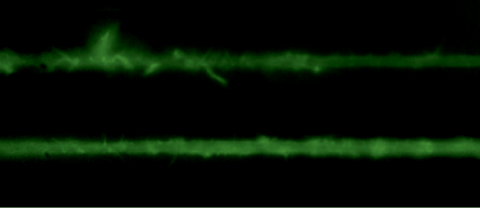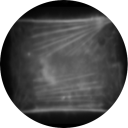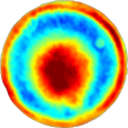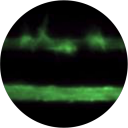Cellular Mechanics

|
|
Thermal fluctuations of biological systemsBiological systems are characterized by large out-of-equilibrium dynamics where broken detailed balance at the molecular scale induce… coming soon |
|
|
Neurite mechanics and biological functionThermal Fluctuations Spectroscopy (TFS) in combination with novel optical-based instrumentation was used to study mechanical properties of cell-cultured neurites with a spatial resolution limited only by the light diffraction. The analysis of thermal fluctuations together with a physical model of cellular elasticity allows us to determine relevant mechanical properties of neurite as axial tension, flexural rigidity, plasma membrane tension, membrane bending rigidity and cytoskeleton to membrane-coupling, whose values are consistent with previously reported values measured using invasive approaches. These measurements have the advantage of not requiring the application of an external force, allowing as to directly establish a correlation between changes in the mechanical parameters and cytoskeleton-protein concentrations. Axonal beading, or the formation of a series of swellings along the axon, and retraction are commonly observed shape transformations that precede axonal atrophy in Alzheimer’s disease, Parkinson’s disease, and other neurodegenerative conditions. The mechanisms driving these morphological transformations are poorly understood. By making quantitative analysis of the shape modes under different conditions, measurement of membrane tension, and using theoretical considerations, we argue that membrane tension is the main driving force that pushes cytosol out of the axon when microtubules are degraded, causing axonal thinning. Under pharmacological perturbation, atrophy is always retrograde, and this is set by a gradient in the microtubule stability. The nature of microtubule depolymerization dictates the type of shape transformation, vis-à-vis beading or retraction. Elucidating the mechanisms of these shape transformations may facilitate development of strategies to prevent or arrest axonal atrophy due to neurodegenerative conditions. |
 |
Cytoskeletal dynamicsThe mechanical response of f-actin stress bundles of RPE-1 cells is under scope when mechanical stretch is applied. Cells are plated onto a H-like PLL-g-PEG/Fibronectin micro patterns on thin PDMS substrates and fluorescent corrected intensity images are used to obtain reliable data of the response of actin structures under mechanical solicitation. |








